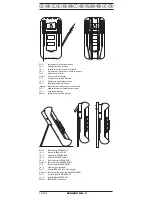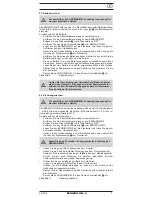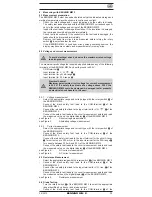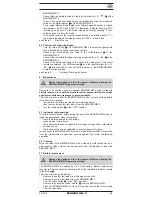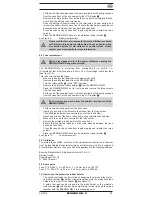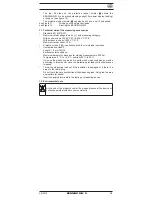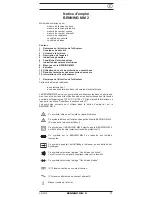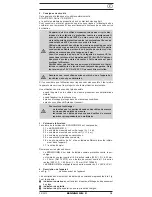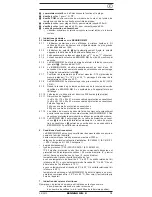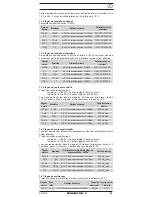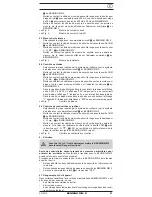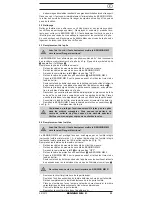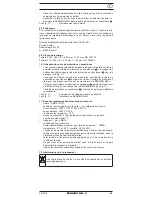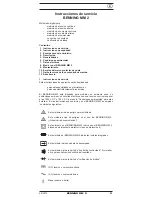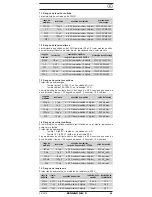
09/ 2013
BENNING MM 2
13
8. Measuring with BENNING MM 2
8.1 Measurement preparation
The BENNING MM 2 must be used and stored only at the indicated storage and
working temperatures, avoid exposure to continuous sunlight.
- Check the rated voltage and current indications on the safety test leads.
The safety test leads provided with the BENNING MM 2 correspond specifi-
cally to the rated voltage and current of the BENNING MM 2.
- Inspect the test leads for damaged insulation. If the insulation is damaged,
the test leads should be discarded immediately.
- Check test lead continuity. If the conductor in the test lead is damaged, the
leads should be discarded immediately.
- Remove test leads from circuit to be measured before turning the rotary
switch
to select another function.
- If the BENNING MM 2 is used near strong noise generating sources, the
display may become unstable and measurement errors may arise.
8.2 Voltage and current measurement
To avoid electrical shock, observe the maximum rated voltage
to earth ground!
The maximum rated voltage that should be applied between any of the following
terminals of the BENNING MM 2 and earth ground is 600 V.
- COM terminal
- Input terminal for V, Ω,
,
- Input terminal for µA/ mA range
- Input terminal for 20 A range
Electrical hazard!
Maximum permissible circuit voltage for current measurement
is 500 V! If a safety fuse blows at a voltage above 500 V the
BENNING MM 2 could be damaged. A damaged tester presents
an electrical shock hazard to the user!
8.2.1 Voltage measurement
- Select the appropriate range and voltage type with the rotary switch
of
the BENNING MM 2.
-
Connect the black safety test lead to the COM-terminal
of the
BENNING MM 2.
- Connect the red safety test lead to the input terminal for V, Ω,
,
of the
BENNING MM 2.
- Connect the safety test leads to the circuit measurement points and read
the measured value on the digital display
of the BENNING MM 2.
see Figure 2:
Direct voltage measurement
see Figure 3:
Alternating voltage measurement
8.2.2 Current measurement
- Select the appropriate range and current type with the rotary switch
of
the BENNING MM 2.
-
Connect the black safety test lead to the COM-terminal
of the
BENNING MM 2.
- Connect the red safety test lead to the input terminal for the µA/ mA range
for currents up to 200 mA, or to the input terminal for the 20 A range
for currents between 200 mA and 20 A of the BENNING MM 2.
- Connect the safety test leads to the circuit measurement points and read
the measured value on the digital display
of the BENNING MM 2.
see Figure 4:
DC current measurement
see Figure 5:
AC current measurement
8.3 Resistance Measurement
- Select the appropriate range with the rotary switch
of the BENNING MM 2.
-
Connect the black safety test lead to the COM-terminal
of the
BENNING MM 2.
- Connect the red safety test lead to the input terminal for V, Ω,
,
of the
BENNING MM 2.
- Connect the safety test leads to the circuit measurement points and read
the measured value on the digital display
of the BENNING MM 2.
see Figure 6:
Resistance measurement
8.4 Diode Testing
- Turn the rotary switch
of the BENNING MM 2 to select the appropriate
range identified by a buzzer and diode symbol.
-
Connect the black safety test lead to the COM-terminal
of the


